Related Research Articles
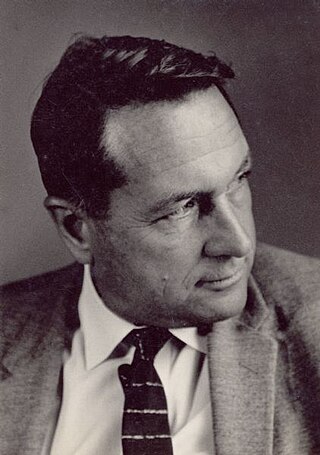
The Highlander Research and Education Center, formerly known as the Highlander Folk School, is a social justice leadership training school and cultural center in New Market, Tennessee. Founded in 1932 by activist Myles Horton, educator Don West, and Methodist minister James A. Dombrowski, it was originally located in the community of Summerfield in Grundy County, Tennessee, between Monteagle and Tracy City. It was featured in the 1985 documentary film, You Got to Move. Much of the history was documented in the book Or We'll All Hang Separately: The Highlander Idea by Thomas Bledsoe.

David Dubinsky was a Belarusian-born American labor leader and politician. He served as president of the International Ladies Garment Workers Union (ILGWU) between 1932 and 1966, took part in the creation of the CIO, and was one of the founders of the American Labor Party and the Liberal Party of New York.
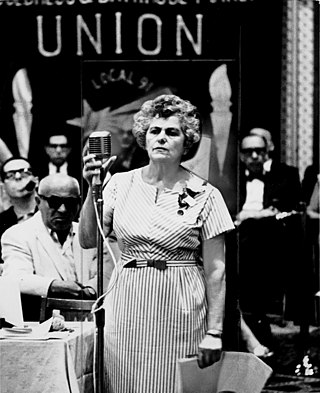
Rose Pesotta (1896–1965) was an anarchist, feminist labor organizer and vice president within the International Ladies' Garment Workers' Union.

Herbert Hill was the labor director of the National Association for the Advancement of Colored People for decades and was a frequent contributor to New Politics as well as the author of several books. He was later Evjue-Bascom Professor of Afro-American Studies and Industrial Relations at the University of Wisconsin–Madison and eventually emeritus professor. He played a significant role in the civil rights movement in pressuring labor unions to desegregate and to seriously implement measures that would integrate African Americans in the labor market. He was also famous for his belief that American trade unions had downplayed the history of racism that tarred their reputations, before and after the Jim Crow era.

John Philip Frey was a labor activist and president of the American Federation of Labor's Metal Trades Department during a crucial period in American labor history.
Workers' Education Bureau of America or WEB or Bureau (1921–1951) was an organization established to assist labor colleges and other worker training centers involved in the American labor movement. The WEB was an important development in labor education in the 1920s. Founded in 1921, it served as an informational clearinghouse for labor education organizing forums around the country and assisting local programs.

Brookwood Labor College was a labor college located at 109 Cedar Road in Katonah, New York, United States. Founded as Brookwood School in 1919 and established as a college in 1921, it was the first residential labor college in the country. Its founding and longest-serving president was A. J. Muste. The school was supported by affiliate unions of the American Federation of Labor (AFL) until 1928.
Theresa Wolfson (1897–1972) was an American labor economist and educator. Wolfson is best remembered as the education director of the International Ladies' Garment Workers' Union during the second half of the 1920s and as a leader of the workers education movement during the 1930s.
Broadus Mitchell was an 20th-century American historian, writer, professor, and 1934 Socialist Party candidate for governor of Maryland.

Charles S. "Sasha" Zimmerman (1896–1983) was an American socialist activist and trade union leader, who was an associate of Jay Lovestone. Zimmerman had a career spanning five decades as an official of the International Ladies Garment Workers Union. During the early 1970s, Zimmerman and Bayard Rustin were national Co-Chairmen the Socialist Party of America and the Social Democrats USA.
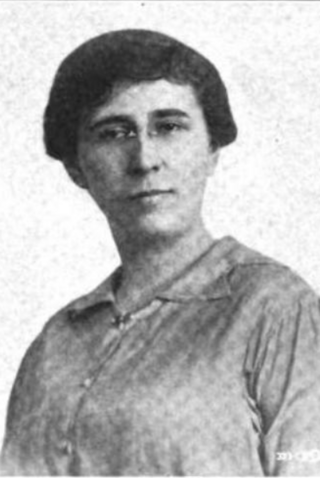
Fannia Mary Cohn was a leading figure in the International Ladies' Garment Workers' Union (ILGWU) during the first half of the 20th century. She is remembered as one of the pioneers of the workers' education movement in the United States and as a prolific author on the theme of trade union education.
Mark Starr was a British American labor historian and pedagogue. For 25 years he was educational director of the International Ladies Garment Workers Union.
The California Labor School was an educational organization in San Francisco from 1942 to 1957. Like the contemporary Jefferson School of Social Science and the New York Workers School, it represented the "transformed and upgraded" successors of the "workers schools" of the 1920s and 1930s.
May Ying Chen is an American labor organizer and advocate for immigrant workers. Before retiring in 2009, she was an officer and founding member of the AFL–CIO's Asian Pacific American Labor Alliance (APALA), and the International Vice President of UNITE HERE.

Maida Springer Kemp was an American labor organizer who worked extensively in the garment industry to improve labor standards for men and women in America through the Local Union 22. She was also known for her extensive work in Africa for the AFL–CIO. Nicknamed "Mama Maida", she advised fledgling labor unions, set up education and training programs, and liaised between American and African labor leaders. In 1945, traveling to England on a labor-exchange trip, as well as observing the conditions of war-torn Britain she would become one of the first African-American woman to represent US labor abroad. She was also active in the civil rights movement, and advocated for women's rights around the world. She was very active in these movements for most of her life.
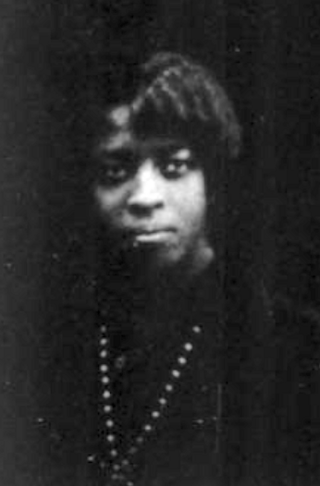
Floria Pinkney was a Progressive Era Black female garment worker and union activist and leader from Brooklyn, New York. She was the first African-American woman to hold a leadership role as an organizer within the International Ladies Garment Workers Union (ILGWU). As a legacy dressmaker, Pinkney was involved in the garment industry throughout her life.
Elias Lieberman (1888–1969) was a Russian-born, 20th-century American labor lawyer who spent his career in the service of the International Ladies Garment Workers Union (ILGWU) and became known as the "Dean of American Labor Lawyers."
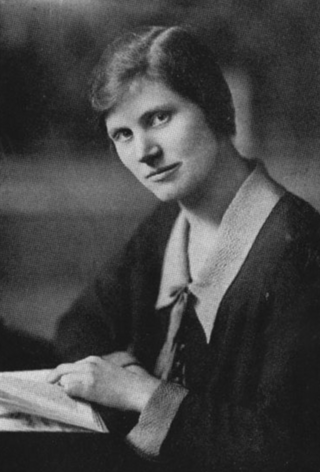
Mollie Ray Carroll was an American economist and settlement worker, best known for her book Labor and Politics: The Attitude of the American Federation of Labor Toward Legislation and Politics (1923).
Joel I. Seidman (1906-1977) was a 20th-century economics professor and Socialist, best known for his 1932 dissertation and book The Yellow Dog Contract as well as work with Brookwood Labor College.
Isidore Nagler was an Austro-Hungarian labor union leader, active in the United States.
References
- ↑ Workers Education in the United States: Report of Proceedings Second National Conference on Workers Education in the United States. Workers Education Bureau of America. 1922. p. 193. Retrieved 20 April 2022.
- ↑ Proceedings of the National University Extension Association, Volumes 7-11. National University Extension Association. 1923. p. 132. Retrieved 20 April 2022.
- ↑ Danielson, Leilah (25 September 2014). American Gandhi: A. J. Muste and the History of Radicalism in the Twentieth Century. University of Pennsylvania Press. pp. 103 (among other schools), 376 (president). Retrieved 20 April 2022.
- ↑ Plumbers, Gas and Steam Fitters Journal. United Association of Journeymen Plumbers and Steam Fitters of the United States and Canada: 33. 1929 https://books.google.com/books?id=GeyfAAAAMAAJ . Retrieved 21 April 2022.
{{cite journal}}: Missing or empty|title=(help) - ↑ International Molders' and Foundry Workers' Journal. International Molders' and Foundry Workers' Union: 386. 1929 https://books.google.com/books?id=m0sMAQAAIAAJ . Retrieved 21 April 2022.
{{cite journal}}: Missing or empty|title=(help) - ↑ "Brookwood Graduates, Members of A.F. of L., Reply to President Green". The American Teacher. American Federation of Labor: 31. March 1929. Retrieved 21 April 2022.
- ↑ Machin, Robert E. (April 1927). "Baltimore Labor Begins Education". The Horseshoers' Magazine. Cincinnati: International Union of Journeymen Horseshoers of the United States and Canada: 4. Retrieved 20 April 2022.
- ↑ "Jewish Social Service: Personals". Jewish Charities. New York: National Conference of Jewish Charities: 271. May 1919. Retrieved 21 April 2022.
- ↑ "Jewish Social Service: School for Social Service". Jewish Charities. New York: National Conference of Jewish Charities: 65. November 1920. Retrieved 21 April 2022.
- ↑ "Jess Perlman, aka Philip Gray (1891-1984)". "Strangers to Us All": Lawyers and Poetry. New York: National Conference of Jewish Charities. Retrieved 21 April 2022.
- ↑ Fraser, Steven (1993). Labor Will Rule: Sidney Hillman and the Rise of American Labor. Cornell University Press. p. 221. ISBN 9780801481260 . Retrieved 21 April 2022.
- ↑ Argersinger, Jo Ann E. (1999). Making the Amalgamated: Gender, Ethnicity, and Class in the Baltimore Clothing Industry, 1899-1939. Johns Hopkins University Press. pp. 74–78. ISBN 9780801859892 . Retrieved 21 April 2022.
- ↑ "Labor Colleges". The Vocational Summary. Washington, DC: James R. Elkins: 226. April 1920. Retrieved 21 April 2022.
- ↑ Workers Education in the United States: Report of Proceedings, First National Conference on Workers Education in the United States. Workers Education Bureau of America. 1921. p. 81. Retrieved 21 April 2022.
- ↑ "At Ruskin College". Labor and Life Bulletin. Chicago: National Women's Trade Union League of American: 2. October 1924. Retrieved 21 April 2022.
- ↑ "Labor Congresses: Convention of Workers' Education Bureau, 1929". Monthly Labor Review. U.S. Bureau of Labor Statistics: 164. May 1929. Retrieved 21 April 2022.
- ↑ "unreadable". American Labor Legislation Review: 15. May 1930. Retrieved 21 April 2022.
- ↑ "unreadable". American Labor Yearbook. Rand School of Social Science: 238. 1931. Retrieved 21 April 2022.
- ↑ Ross, William (20 May 1980). "William Ross Oral History, May 20, 1980" (HTML text) (Interview). Interviewed by Walter Massy Phillips. Temple University - Oral Histories - Temple Digital Collections. Retrieved 19 April 2022.
- ↑ Bloom, Jonathan D. (March 1989). Rae Wahl Rohfeld (ed.). Workers' Education and Adult Education. Breaking New Ground: The Development of Adult and Workers' Education in North America. Irene Quinlan (copy editor). Syracuse University Kellogg Project.
- ↑ Rita, Heller (2008) [1984]. "Blue Collars and Blue Stockings: The Bryn Mawr Summer School for Women Workers, 1921-1938". In Kornbluh, Joyce L.; Frederickson, Mary (eds.). Sisterhood and Solidarity: Workers' Education for Women, 1914-1984. Philadelphia: Temple University Press. pp. 120, 124, 154.
- ↑ Bly, Cynthia (2004). "Calverton, V.F.". In Wintz, Cary D. (ed.). Encyclopedia of the Harlem Renaissance: A-J. Taylor & Francis. p. 208. ISBN 9781579584573.